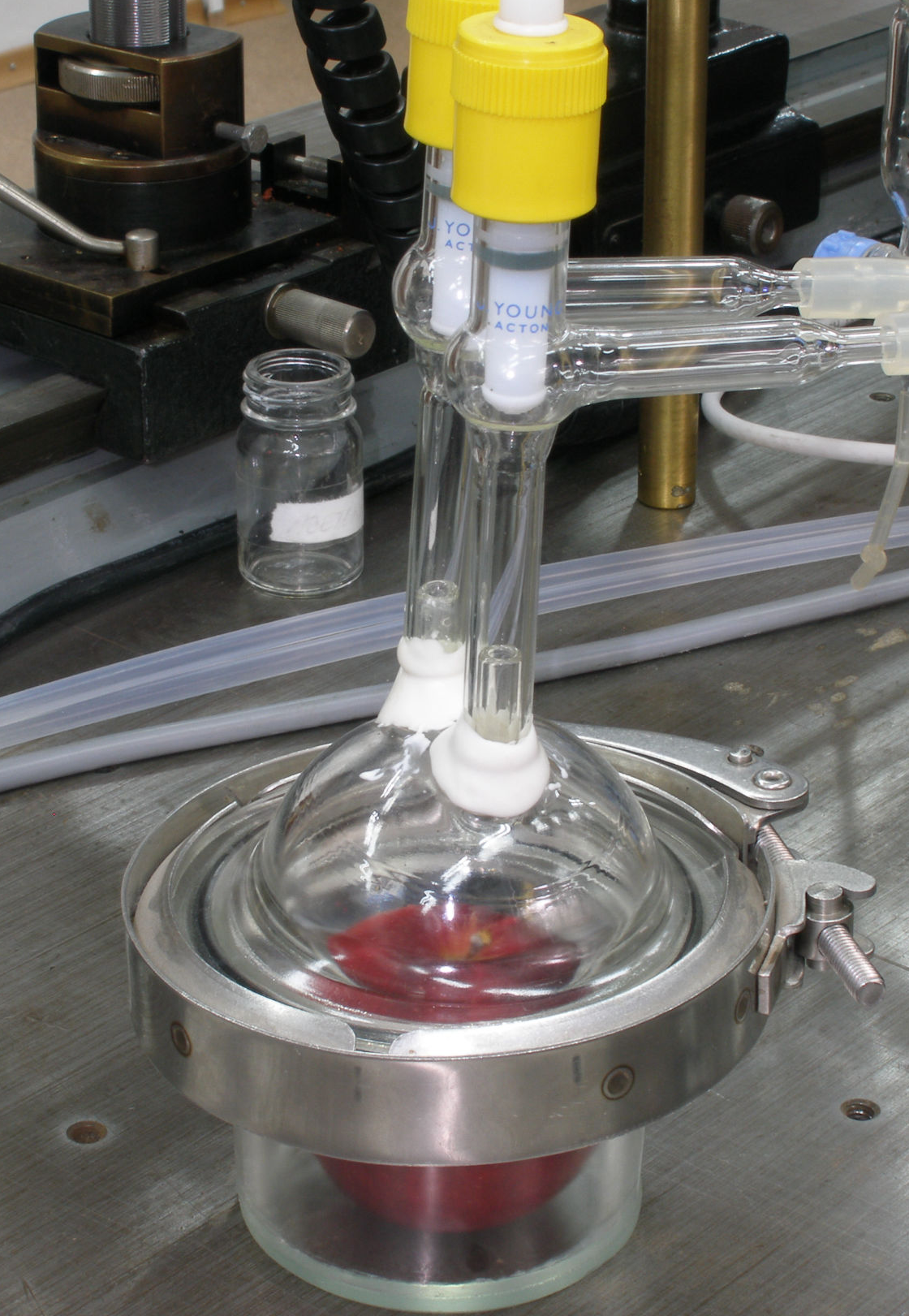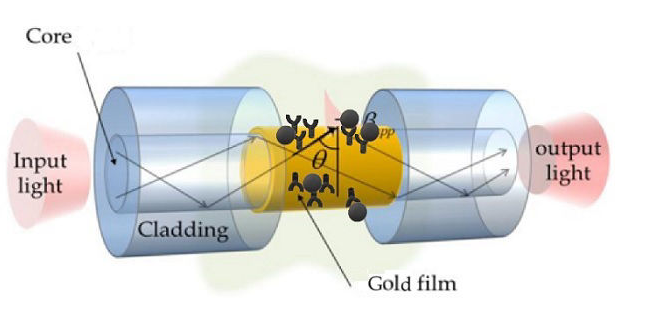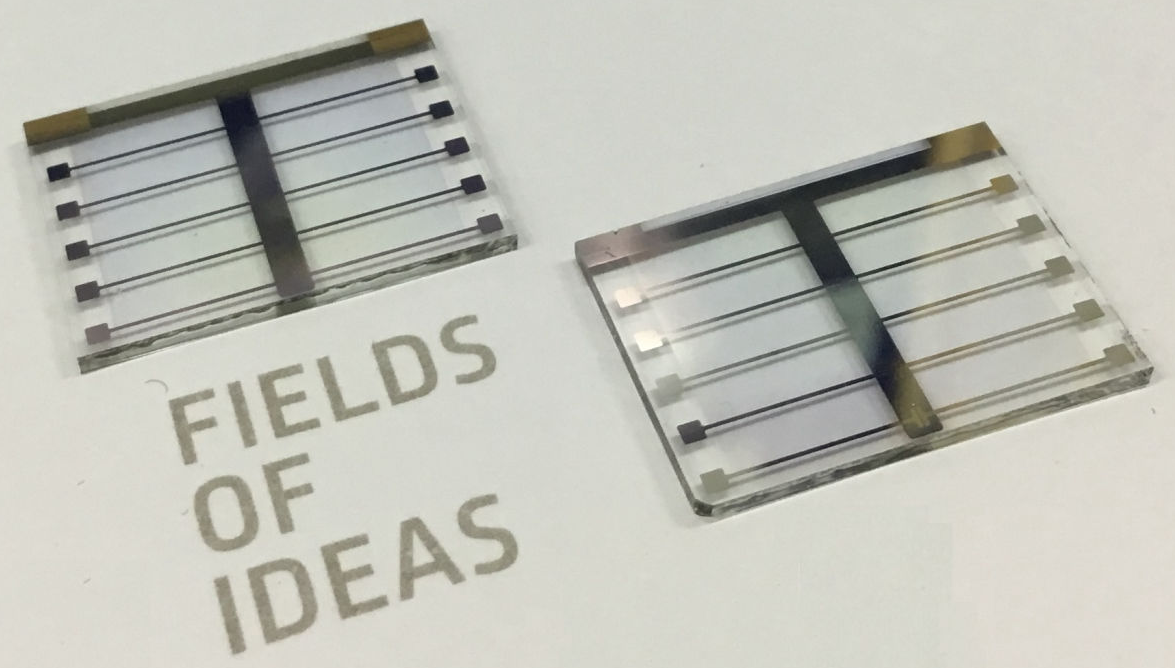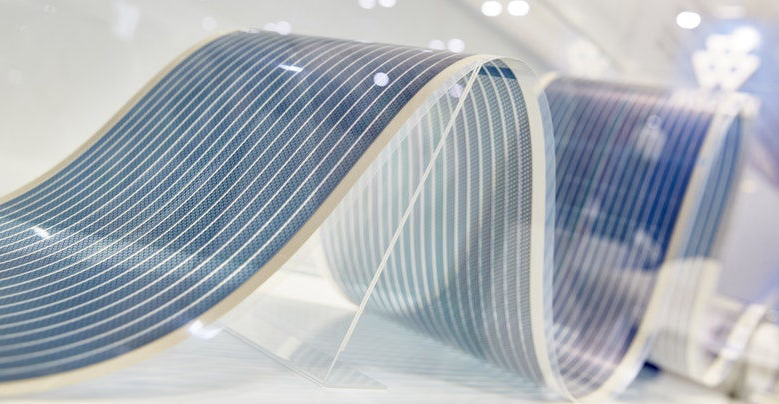
Laser spectroscopy is a successful tool for the detectionn of specific gases with high sensitivity and fast time response. Optical detection techniques have to operate in the so-called "molecular fingerprint region", located in the near IR wavelength range (between 9.2 and 10.8 μm) of the CO2 laser. The CO2 LPAS system can detect various gases, such as ethylene with a minimum of 0.9 ppb to 100 ppm and this system offers many advantages:

Surface Plasmon Resonance (SPR) is a powerful optical technique, allowing an efficient characterization and real-time quantification of biomolecular interactions. We have developed a low-cost and user-friendly fiber optic–SPR (FO-SPR) sensing setup, using gold-coated optical fibers to transport the light towards a plasmonic interface obtained in conjunction with a solution containing the molecular target. Any binding events at the gold surface will trigger a SPR signal response which can be further processed into a graphical representation, giving information about the bio-chemical species involved, their biomolecular interactions and even the binding kinetics.

Our research interests and efforts are oriented towards the current needs of the global gas sensors market. Worldwide, there is an increased demand for sensing devices to assist modern technological processes both in terms of controlling and analyzing toxic emissions as well as in terms of reducing the energy consumption. This global market, forecasted to maintain a CAGR of 5.1% until 2020 ensures a multitude of research opportunities.
We are mainly focusing on two directions:
